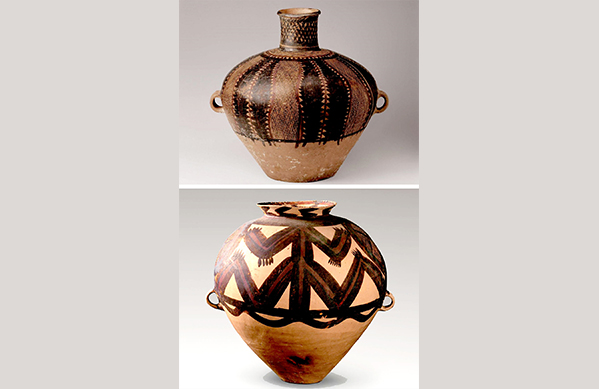Majiayao earthenware

A painted ceramic jar of the Banshan phase (above) and a painted jar of the Machang phase (below) Photos: GANSU MUSEUM
The most distinctive artifacts of the Majiayao culture are its painted pottery. After the decline of Yangshao painted pottery in the Central Plains, the Majiayao culture continued to develop, pushing the painted pottery industry to unprecedented heights, known as the prehistoric “Chinese painting.” The 2000-year development of the Majiayao culture can be divided into four phases: Majiayao, Bianjialin, Banshan, and Machang.
The ceramics of the Majiayao phase, dating back approximately 5,300-4,850 years ago, primarily consisted of dinnerware. The increasing number of large storage vessels suggests the further development of agricultural production during this period. Potters decorated their orange-yellow wares with designs in black pigment, featuring sweeping parallel lines and dots.
Pottery during the Bianjialin phase, around 4,850-4,650 years ago, is distinguished by “chickencomb-shaped” handles and the application of red pigment, laying the foundation for the development of Banshan painted pottery.
Most of the ceramics of the Banshan phase (4,650-4,350 years ago) are orange-red ware with curvilinear designs, decorated with various patterns consisting of black and red lines. The patterns are generally painted on the upper body of the pieces, and feature spirals, zigzags, rhombuses, and nets.
The patterns of the Machang-phase (4,350-4,050 years ago) pottery are mostly characterized by four large circles and transforming divine figures. There are a large number of abstract symbols on the painted pottery, including “〇,” “×,” “卍,” “十,” and “一.” These symbols may represent clans and tribes at that time or serve as potential predecessors of Chinese writing.
Edited by REN GUANHONG
